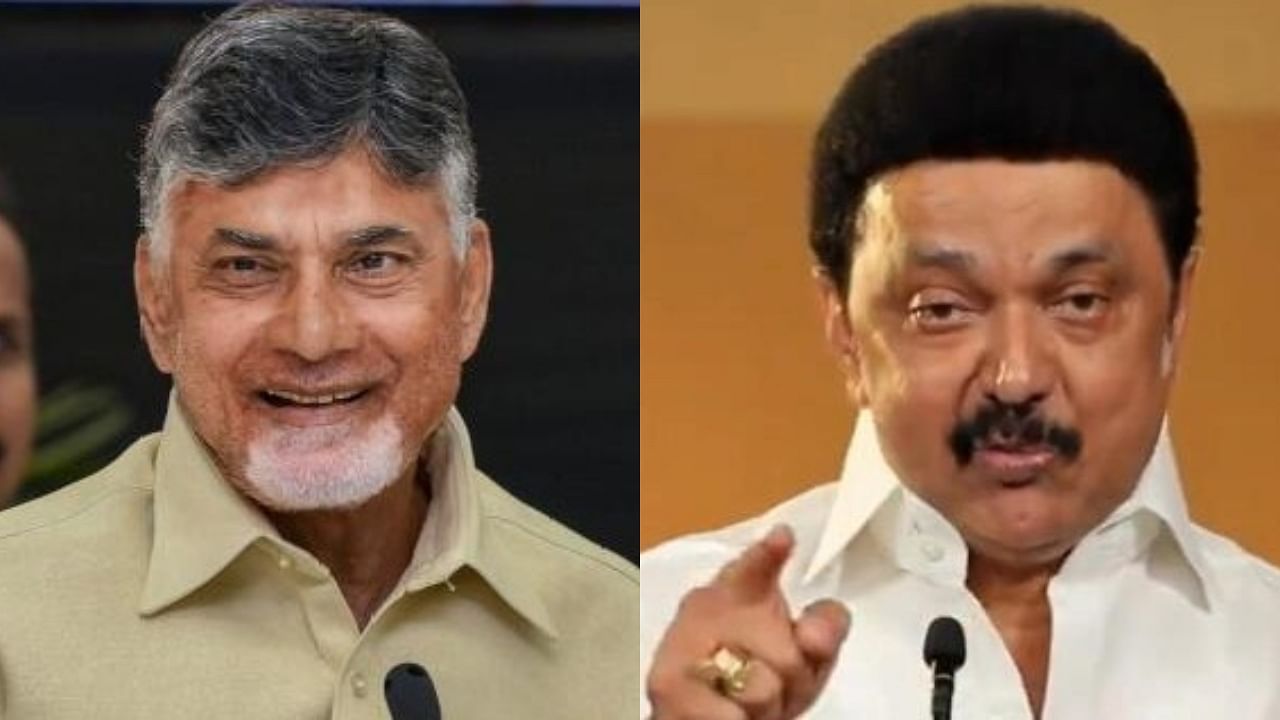
From left: Chandrababu Naidu, M K Stalin
Credit: PTI photo
The concerns expressed by Andhra Pradesh Chief Minister N Chandrababu Naidu and Tamil Nadu Chief Minister M K Stalin over the demographic changes in the country are not new. Naidu has expressed it in demographic terms and Stalin has done so in political terms. Many others have expressed it in the past when populations in all South Indian states have seen negative trends. Though the country’s fertility rate has been falling and is now near or below the replacement level of 2.1, it is significantly lower in the South than in the North. While it is at or near 1.7 in the southern states, it is much above 2 in all northern states. This imbalance is seen to be working against the interests of the South and may have political, economic and social consequences.
One major consequence is that the delimitation of parliamentary constituencies after 2026 may reduce the political representation of all southern states and increase the representation of the northern states. If constituencies are reconfigured on the basis of the existing population, the southern states will have fewer constituencies. This can reduce their relative political clout which is even now not big. They will also suffer in the matter of devolution of central taxes. The point is that the southern states, which have done better for themselves and for the nation, should not be penalised for their performance. Some of them have made it clear that they should not be forced to subsidise the economies of non-performing states. Such a situation puts more pressure on the federal system which is already under some stress. The political divide between the North and the South, as it exists now, aggravates the concerns caused by the demographic and economic divide.
Both Naidu and Stalin have called upon the people of their states to have more children. It is debatable whether or not the solution is good and workable. It is necessary to address the political and economic problem arising from the demographic imbalance in the immediate future and the threat posed by a greying population in the medium term. But the size of the family has generally depended on personal and family choices and educational, economic and social situations of the parenting couples. State intervention has hardly helped. When China implemented the one-child norm, it had a negative impact, and when it relaxed the norm, the fertility rate did not improve. This was the case with some other countries too. If the policy becomes coercive, it will be undemocratic and will also harm the individual’s and the family’s, especially women’s, agency. But the two chief ministers’ comments show that there is a growing and serious concern over the country’s demographic trends, and that needs to be addressed.